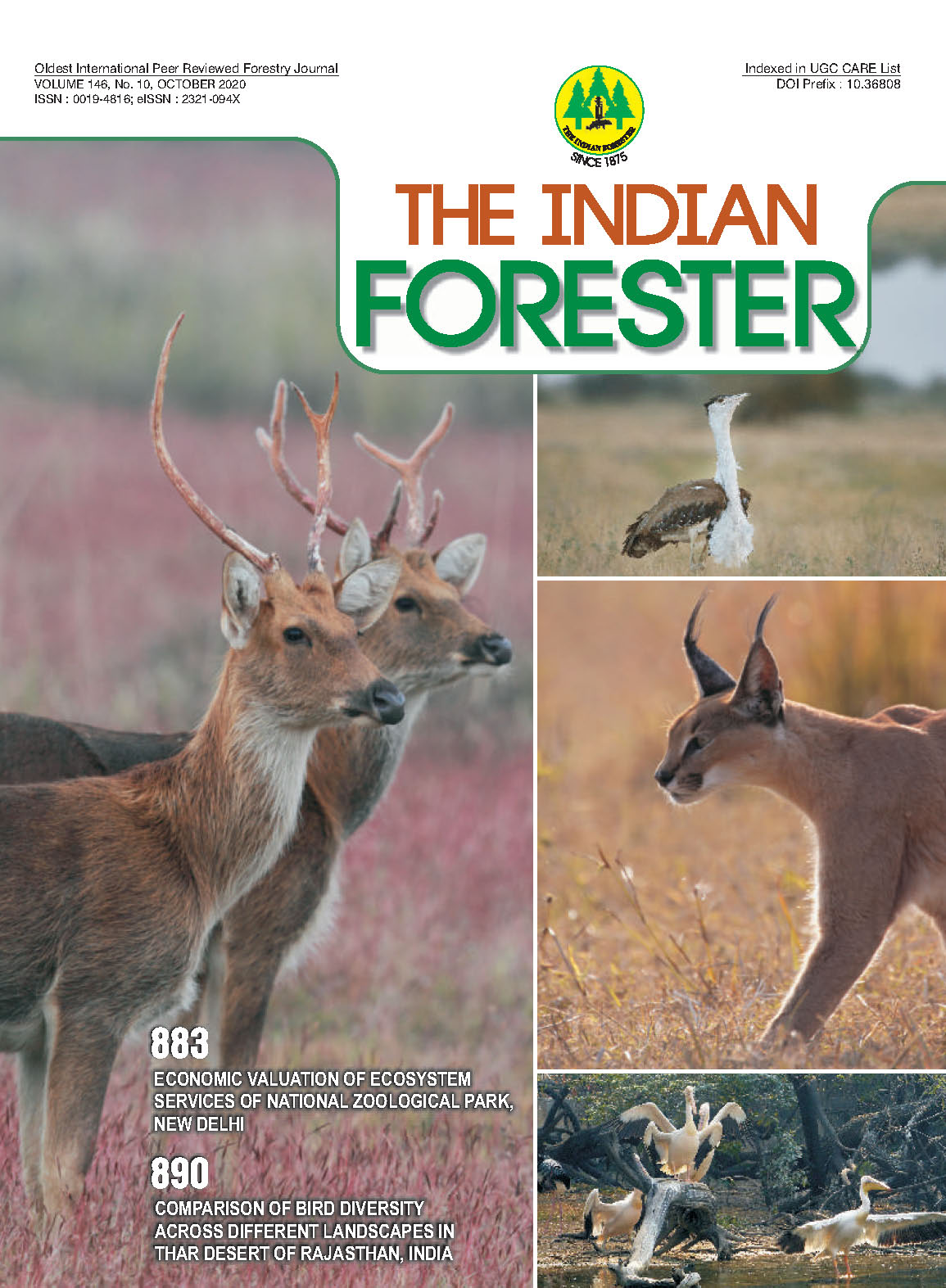Distribution of Biackbuck (Antelope cervicapra) and its Conservation strategies in Hanumangarh district of Rajasthan, India
DOI:
https://doi.org/10.36808/if/2020/v146i10/155435Keywords:
Biackbuck, Conservation, Flora and fauna, Community.Abstract
A field survey was conducted for the distribution and conservation practices ofBlackbuck in Hanumangarh district of Rajasthan from March, 2016 to August, 2018. Road Transect method was used for survey for distribution ofblackbuck population in various areas ofHanumangarh district. Boundary of each area and existing canal was demarcated with GPS locations. The studyshows that the population of the biackbuck is growing in the region. Proper management practice is very essential for the long term survival ofBlackbuck and its habitat conservation.References
Blandford W.T. (1888). The Fauna of British India including Ceylone and Burma, Mammalia Part II, TaylorandFrancis, London.
Hall J.E. (1936). Horn growth as observed in Blackbuckand Nilgai, J. Bomb. Nat. Hist. Soc., 38(3): 618-619.
Johnson and Mangalraj J. (1975). The Blackbuck in point calimere sanctuary, Tamilandu. Population dynamics and observations on behavior, Indian Forester, 101(8): 48494.
IUCN (2017). The IUCN Red List of Threatened Species, Version 2017-2. Available a t:www.iucnredlist.org.
Krishnan M. 1972: An ecological survey of the larger Mammals of Peninsular India. J.of Bombay Nat. Hist. Soc. 67(2): 469-501.
Lehmkuhl J.F. (1967). Some aspect of the history of blackbuck in Nepal, Bomb. Nat. Hist. Soc., 77(3): 444-449.
Long J.L. (2003). Introduced mammals of th e world: their history, distribution and influence, CSIRO Publishing, Victoria, Australia, pp. 486-487.
Meena R. and Chourasia V. (2017). Activity Pattern of Blackbuck Antilope cervicapra (Linn) in the Sorsan Grassland, International Journal ofResearch in Applied Science and Engineering Technology, 5 (12): 1560- 1564.
Mungall E.C. (1978). The Indian blackbuckantelope: ATexas view. College Station, Texas, The Texas Agric. Exp, Station, Texas A and M Univ. System. 184.
Ranjitsinh M.K. (1989). ThelndianBlackbuck Natraj Publishers, Dehra Dun, pp. 155.
Saxena A.K. Bisht N.S. and Singh C.J. (2008). The Value of the Indian Gazelle Gazella gazella: A Case Study in Haryana, India. IndianForester, 134(10): 1289-1295.
Sharma A.K. and Sharma S. (2013). Daily Activity Pattern of Blackbuck, Antilope cervicapra L. of Tal ChhaparWildlife Sanctuary, Rajasthan and its Seasonal Variation. VOL.-II, ISSUE-III pp-38-43.
Walker F. (1974). Some reflection on expressive behaviour in combat and courtship ofcertain horned ungulates. The behaviourofungulates and its relation to management. I.U.C.N. Publ., newseries, 24: 56-106.
Downloads
Downloads
Published
How to Cite
Issue
Section
License
Unless otherwise stated, copyright or similar rights in all materials presented on the site, including graphical images, are owned by Indian Forester.





